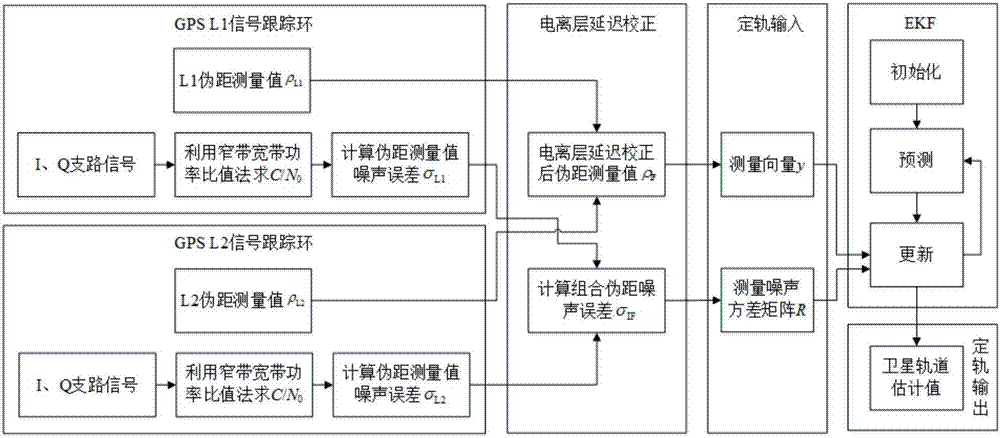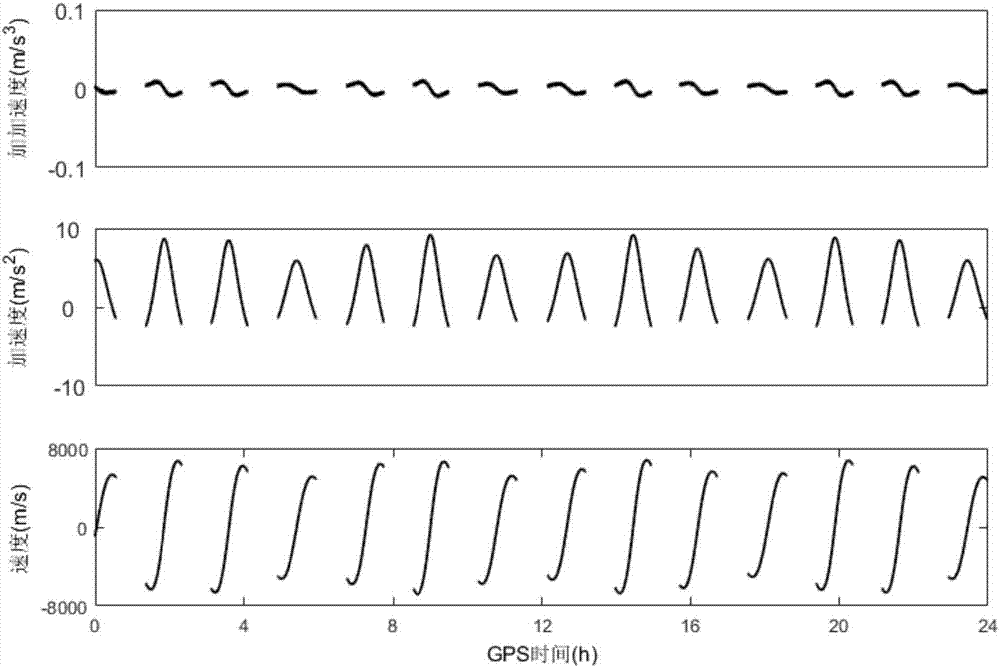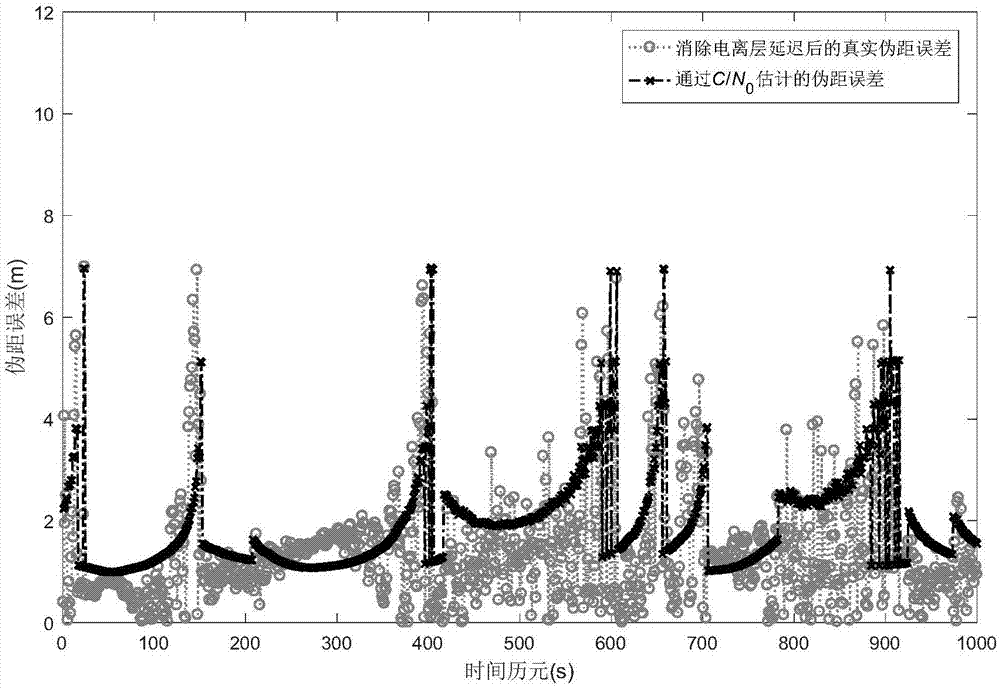Spaceborne GPS orbit determination method based on adaptive measurement noise variance estimation
A technique for measuring noise and variance estimation, applied in the field of satellite-borne GPS orbit determination
- Summary
- Abstract
- Description
- Claims
- Application Information
AI Technical Summary
Problems solved by technology
Method used
Image
Examples
Embodiment
[0127] Take the Level 1B data of the GRACE A satellite from January 5th to 6th, 2008 as an example. The data includes L1, L2 dual-frequency pseudo-range measurements and signal-to-noise ratio data collected by the on-board GPS receiver. The AMNVE method proposed by the invention and the traditional EKF algorithm are used to estimate the orbit of the GRACE A satellite in real time, and the result is compared with the post-event precision ephemeris to obtain its orbit determination accuracy.
[0128] Depend on Figure 4 , 5 , 6, it can be seen that the traditional EKF algorithm has errors of 0.93m, 1.27m and 0.83m in the radial direction, tangential direction and normal direction, while the errors of the AMNVE method proposed by the present invention in the three directions are 0.78m, 0.97m and 0.68m , decreased by 16%, 23% and 18% respectively; by Figure 7 It can be seen that the 3D positioning error has dropped from 1.78m to 1.42m, a reduction of 20%. In the traditional EK...
PUM
 Login to View More
Login to View More Abstract
Description
Claims
Application Information
 Login to View More
Login to View More - R&D
- Intellectual Property
- Life Sciences
- Materials
- Tech Scout
- Unparalleled Data Quality
- Higher Quality Content
- 60% Fewer Hallucinations
Browse by: Latest US Patents, China's latest patents, Technical Efficacy Thesaurus, Application Domain, Technology Topic, Popular Technical Reports.
© 2025 PatSnap. All rights reserved.Legal|Privacy policy|Modern Slavery Act Transparency Statement|Sitemap|About US| Contact US: help@patsnap.com



